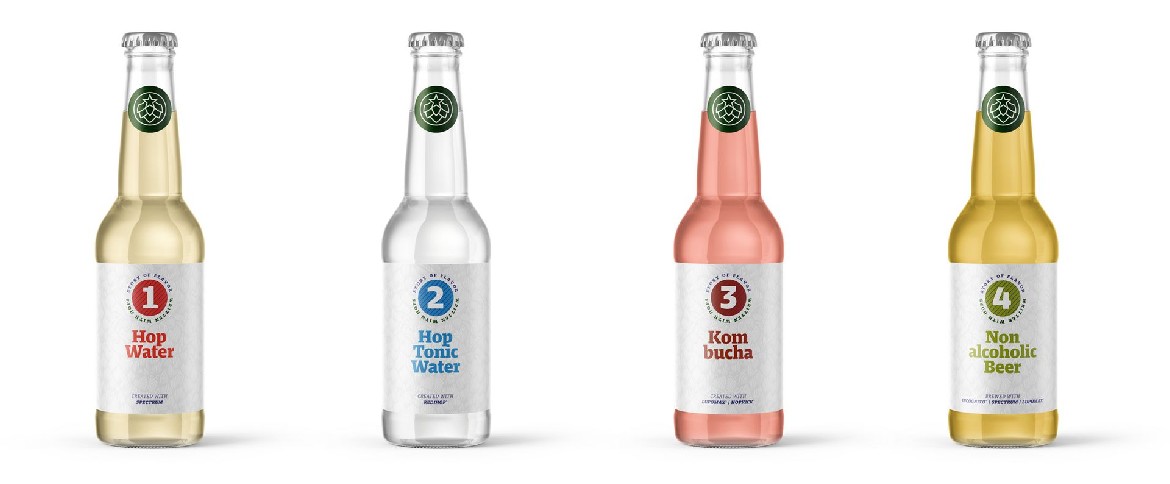In the spirits sector, gin has been a growing market segment for years. However, many consumers do not consume gin alone but enjoyed with a mixer. As a rule, these are bitter lemonades such as tonic water or bitter lemon.
Origin
Bitter lemonades originated as a beverage for malaria prevention by many of the colonial governments. Since 1820, one used quinine for prophylaxis over at least a period of 1.5 weeks1. However, besides its anti-malarial effect, quinine has some side effects such as headache, nausea, vision problems. For most people, these side effects occur only at very high dosages, but there are also sensitive groups of people. Therefore, quinine must be specifically written on the label, and there are legal maximum levels.
To avoid this explicit declaration and also to offer consumers with a hypersensitivity to quinine, a possible substitute in tonic water is the dominant bittering agent in hops. However, alpha acids in general are a poorly soluble substance in the aqueous medium. In the brewing process, boiling isomerizes alpha acids into iso-alpha-acids so that its solubility is significantly increased. However, this thermal process does not take place in the production of lemonades as the only thermal treatment is usually pasteurization at the end of production, when the product is already filled in the can or bottle. Consequently, a product must be used that already contains this isomerized alpha acid.
In addition, depending on the composition of the beverage, there is also the slight risk of a light-induced reaction with sulfur-containing amino acids that results in the formation of 3-methyl-2-butene-1-thiol from the isomerized alpha acid. This is the so-called lightstrucktaste, which, according to experts, smells mainly like skunk. To recreate the bitter impression and the points mentioned, RediHop® is used in our "Hop Tonic Water". This is a product to adjust for bitterness and it is light-stable and shows good solubility in the aqueous medium. From a sensory point of view, it is also the case that the use of RediHop® produces a softer and less intense bitterness.
Naming
Legally, the term "tonic" implies health-related advertising, but under Regulation (EU) 2019/3432, in the form of tonic water or similar terms, it is not advertising a health-related effect, but it is much more of an established beverage category. However, as a condition for the use of the term "tonic" and similar forms, the use of "quinine" as a flavoring with the appropriate labeling is required. Commercially, our creation without quinine should therefore not be called tonic.
Flavors
In addition to the bitter impression, many aromatic creations have emerged in recent years that give the enjoyment of gin and tonic a special kick. In addition to the classic rather citrusy aromas, more and more fruity and herbal aromas are coming into play, which interact with the bouquet of the gin and make it an exciting and multi-layered drink.
Therefore, we decided to also have a hop-driven flavor in our “hop tonic”. There are various possibilities for flavoring with hops. On the one hand, there is the production of a hot extract, comparable to the preparation of tea, on the other hand, there is also the possibility of dry hopping, i.e. a cold extract. The simplest process is the addition of hop oils or, as in our case, the use of our PHA® Topnotes, which create a distinctive hop aroma in the beverage.

SOURCES
1Chininhaltige Getränke können gesundheitlich problematisch sein; Aktualisierte Gesundheitliche Bewertung* Nr. 020/2008 des BfR vom 17. Februar 2005
2Verordnung (EU) 2019/343 der Kommission vom 28. Februar 2019 mit Ausnahmen von Artikel 1 Absatz 3 der Verordnung (EG) Nr. 1924/2006 des Europäischen Parlaments und des Rates über nährwert- und gesundheitsbezogene Angaben über Lebensmittel zwecks Verwendung bestimmter allgemeiner Bezeichnungen

